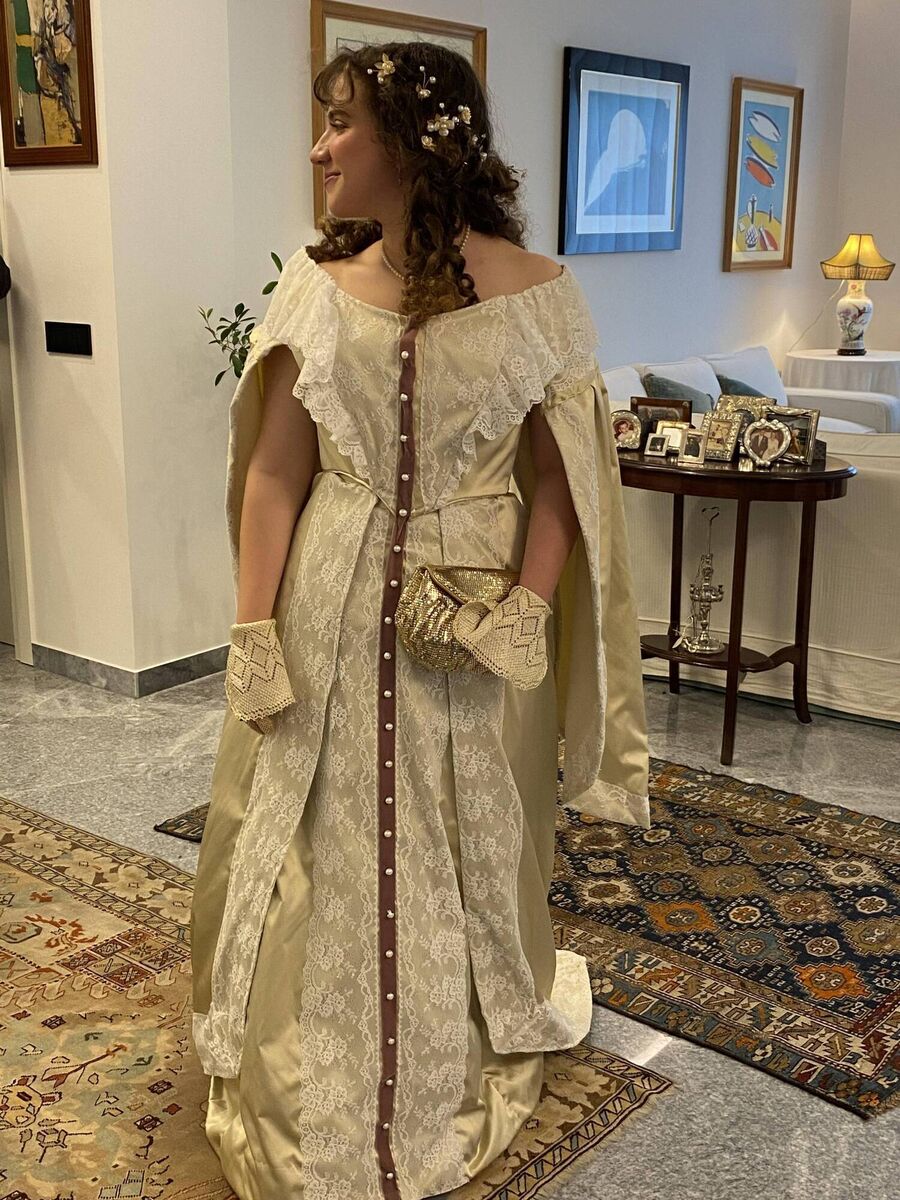Italian writer pursuing her passions in Cork

Margherita Selicato is currently studying archaeology and history of art at UCC.
Waiting for author Margherita Selicato to arrive in a Cork hotel to talk about her book, I imagine a precocious, cocky young one.
After all, this 19-year-old Italian, currently studying archaeology and history of art at UCC, started writing at the age of 13 and completed her historical fiction novel at just 18. It has just been published.
The author of From Ekaterinburg To Askat, dressed in an Edwardian-style high-necked cream-coloured blouse and a skirt she made herself in the fashion of the protagonists of her novel, is surprisingly low-key, a little serious, and speaks fluent English in an American accent. She wrote her debut book in Italian and translated it herself into English.
Keen to experience life abroad and “mature a little”, this Rome native had an Irish teacher in Italy who spoke highly of Irish universities.
Margherita was drawn to UCC because she liked the size of Cork city. She is very happy at the university, unlike her school experience.

“I changed schools at 12, right in the middle of my middle school cycle. My parents made the decision to move me to an international school, which is like an American school but is in Rome. Every nationality goes there.
“My parents wanted me to go there because my sister had been and also because I was having issues with my classmates at my first school. It was time to move me a little early.
“It was always the plan to go to the international school... it took me years to see that my parents made a great decision.”
For a while as a young girl, Margherita wanted to be an archaeologist and is pursuing that line of study. Then she wanted to be a writer and promptly pursued that ambition, which she now describes as her passion.
An alternative narrative
Obsessed with the imperial Romanov tragic family story which saw all seven of them executed, Margherita wondered what if they survived after the Russian Revolution. Her novel is an alternative story of the siblings (four girls and one boy) who, surviving the murder attempt, set off on a fascinating journey; laughing, suffering, learning – and growing up along the way.
The premise of the tale is that when you’re lonely or lost, friends (who happen to be siblings) can guide the way out of the darkness.
In writing the novel, Margherita says: “I wanted an outlet for all the thoughts I had in my head. I was imagining the pretty dresses that the Romanov sisters wore. I read some historical extracts of their actual conversations and thought about how they might have carried on in a different context. What if they weren’t confined to the palace? That’s how the book was born. I remade the story in a way that made me happier.”
Margherita read a lot of books about the family, “who were surprisingly close for royal family standards of the time. The parents were a love match. People didn’t want Nicholas to marry Alexandra but he loved her. Insanely, despite having four girls before they had a male heir, the parents didn’t resent the daughters at all, so I was drawn to that aspect of their story.”
There used to be a rumour that one of the daughters, Anastasia, survived.
“It has been proven that all the bodies of the family were found. There were a lot of fake grown-up ‘siblings’ after the execution so you had something like six Marias and ten Olgas.”
Writing a sort of fantasy novel set against a historical backdrop was an enjoyable experience for Margherita.
“I realised I could publish it. I wrote in my free periods during school. I would finish my homework and get on to the book straight away. It was my passion project for five years – and it still is.”
Sequel
Margherita is “obsessed” with the Russian family and has started work on a sequel to her book.
“There are a lot of parallels between me and the four sisters. I grew up very sheltered. I’m grateful for having discovered the family for myself. It brought me closer to hobbies like reading. A thing I have in common with the sisters is crafting and sewing. I like traditional needlework such as embroidery.”

At the International School, Margherita admits that she was singled out and described by some as a ‘weirdo’.
“When I was 17, that was still going on. It was very immature of the high-schoolers. But thankfully, I had a great support group at school. And as soon as I graduated, I was able to shrug it off as I was never going to see those people again. It doesn’t matter what they think. It was less constant than at the Italian school but it was still there. So I was kind of guarded about working on the book.”
Asked if she had a normal adolescence, Margherita thinks not.
She “hated” discos, finding them too loud and crowded. “I wasn’t comfortable in that space.”
But Margherita made good friends at school. “My book is about friendship in a family and with other people. Friends and family are my number one priorities. I think it’s the most important thing you can have in your life.”
Her book is self-published with funding from her lawyer and university professor father. She surprised a lot of people, including her parents, when she announced she had written it.
Margherita doesn’t mind the solitary nature of writing. “It’s what I do to recharge because I’m more of an extrovert. I’m with people most of the day. I write before bed.”
She has learned that no matter how hard life is, “there’s always a chance you’re going to pull through. Everyone in their teen years has very bad moments. You feel everything so deeply when you’re that young.”
And keeping her audience in mind, Margherita says the book is suitable for teens and younger people. Its themes include “the dehumanisation of royalty. My attitude to the Romanov family is that I support them, especially the children. But I’m not for the system. People died because of it.
“For some, the symbols of royalty are an escape. I think many aspects of it are unnecessary. It wasn’t a good system. That’s why it was taken down,” says this young writer, who pursues her interests with a zeal that should serve her well.







 App?
App?


